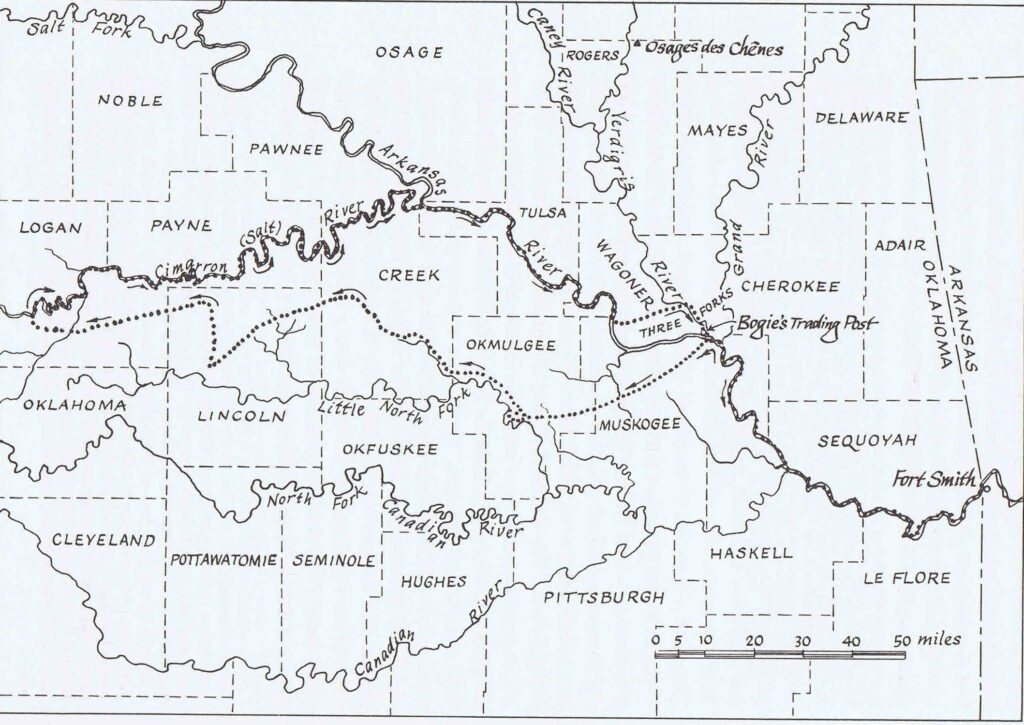
On July 2, 1819 Nuttall “remained at the garrison [Fort Smith],” recuperating from his trip back north from the Red River. In a few days (July 6), he will resume his trip up the Arkansas river, with the Three Forks area his next target.
Though we have explored along this route (and described some of that in previous posts), we have never had a workshop or field trip that focused on it. I have decided that this segment of Nuttall’s track would make a good area to explore for our first post-Covid workshop. No firm date yet, but I am looking at mid-September, hopefully, past the worst of summer heat and humidity.
I hope you will consider joining us.
Here is a little tidbit from Nuttall’s journal to whet your appetite, this is from his first day out, a few miles upstream from Fort Smith: “We encamped four miles below Skin bayou [=Big Skin Bayou], and our party amused themselves by searching for turtle eggs, which the females deposit in the sand at the depth of eight or ten inches, and then abandon their hatching to the genial heat of the sun. They are spherical, covered with a flexible skin, and considered wholesome food.” (pg. 184-185)
There is no note as to what species of turtle this is. Do any of you know what local species it is likely to have been? It puts me in mind of sea turtles and the efforts on sandy beaches around the world to protect turtle eggs and hatchlings. Because this type of sand bar river habitat is practically non-existent on most of the Arkansas River in this reach today. The channelization, dams, and locks of the current river preclude it. There are some sandy areas in backwater areas of the Sequoyah National Wildlife Refuge, which is in the vicinity Nuttall is describing. We will visit the Refuge on our trip next September.
